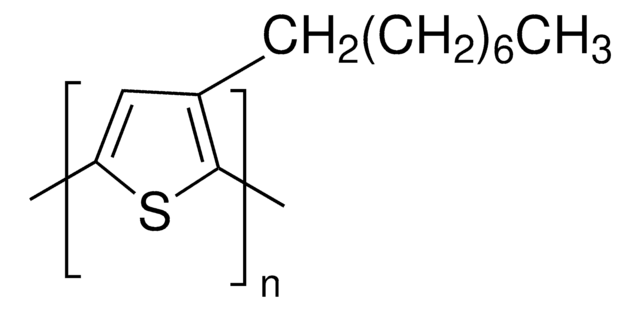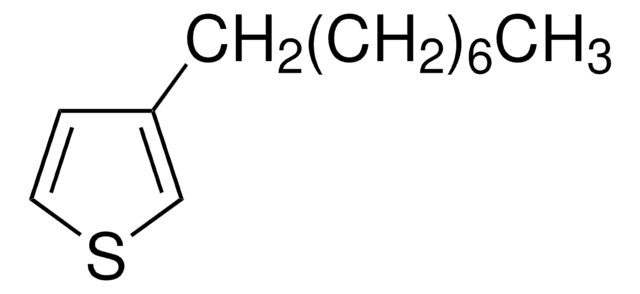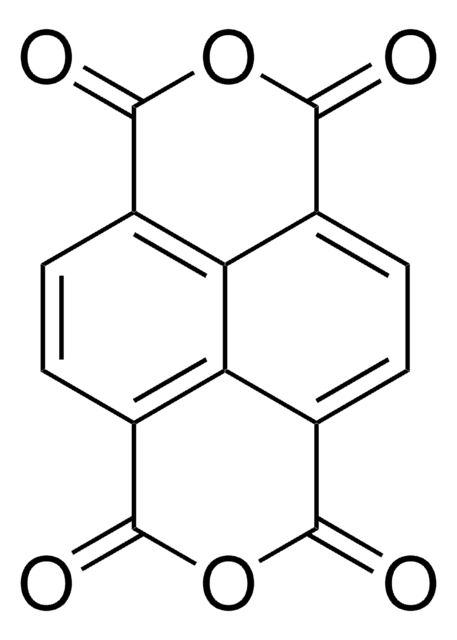445711
Poly(3-octylthiophene-2,5-diyl)
regioregular
Sinónimos:
P3OT
About This Item
Productos recomendados
mol wt
average Mn ~34,000
color
black
conductivity
1 × 10-6 S/cm
~1 × 103 S/cm (when doped with iodine)
mp
190 °C
198-211 °C
fluorescence
λex 442 nm; λem 562 nm in chloroform
OPV device performance
ITO/PEDOT:PSS/P3OT:PC61BM (1:2)/LiF/Al
semiconductor properties
P-type (mobility=1E-4-1E-1)
¿Está buscando productos similares? Visita Guía de comparación de productos
General description
application
Rechargeable battery electrodes, electrochromic devices, chemical and optical sensors, light-emitting diodes, microelectrical amplifiers, field-effect transistors and non-linear optical materials.
Features and Benefits
Packaging
Legal Information
Rieke is a registered trademark of Rieke Metals, Inc.
Storage Class
11 - Combustible Solids
wgk_germany
WGK 3
flash_point_f
Not applicable
flash_point_c
Not applicable
ppe
Eyeshields, Gloves, type N95 (US)
Certificados de análisis (COA)
Busque Certificados de análisis (COA) introduciendo el número de lote del producto. Los números de lote se encuentran en la etiqueta del producto después de las palabras «Lot» o «Batch»
¿Ya tiene este producto?
Encuentre la documentación para los productos que ha comprado recientemente en la Biblioteca de documentos.
Los clientes también vieron
Artículos
The application of conducting polymers at the interface with biology is an exciting new trend in organic electronics research.
Intrinsically stretchable active layers for organic field-effect transistors (OFET) are discussed. Polymer structural modification & post-polymerization modifications are 2 methods to achieve this.
Novel Graphene‑Based Nanostructures Production, Functionalization, and Engineering
Nuestro equipo de científicos tiene experiencia en todas las áreas de investigación: Ciencias de la vida, Ciencia de los materiales, Síntesis química, Cromatografía, Analítica y muchas otras.
Póngase en contacto con el Servicio técnico




![Poly[2-methoxy-5-(2-ethylhexyloxy)-1,4-phenylenevinylene] average Mn 40,000-70,000](/deepweb/assets/sigmaaldrich/product/structures/344/488/b8f8179d-3970-4deb-a754-adda88cdb36f/640/b8f8179d-3970-4deb-a754-adda88cdb36f.png)






